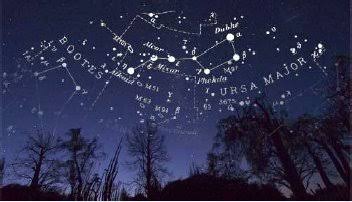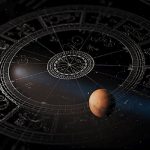Astrological systems have evolved over the centuries since The Babylonians introduced it to the Ancient world. Ever since its introduction, the fascinating field of contemplation and prediction was adopted by the Egyptians, the Arabs & the Persians and others. These are just a few of the well-known astrological systems widely in use during Ancient times. However, after several centuries of study and development, Astrology took a modern shape to include many perspectives in studying the effects of celestial objects on the modern world.
Development of Astrology – A Snippet
The age-old traditions of astrology have given way for a more sophisticated view that enables better predictions. The need to overcome the limitations of numerous systems of astrology of the bygone eras, became the inspiration to take a detailed route to develop astrology. Scriptures and emblems on objects were commonly incorporated to study astrological findings during the pre-modern times. Chinese, Indian, Tibetan and Western Astrology all brought in fresh new perspectives of study unknown during the traditional days.
The emergence of technology to draw better connections between astronomical facts and astrology paved way for the birth of advanced astronomical systems. The connections made way for profound findings and a more systematic method of predicting future events.
Developed Astrological Systems
Astrology is a vast subject, expanding every now and then with newer systems introduced frequently. All the systems have their benefits and limitations, but with their own proven ways to enable profound predictions. If you see deeply, astrology has different systems of prediction and it’s not a one-size-fits-all approach.
Just think about it. A particular type of medicine doesn’t suit all suffering from the same health issue. Similarly, a specific system of astrology doesn’t suit everyone. There are different requirements that need different approaches to address and treat the issue. There are expert astrologers, different from each other, possessing unique technique and the genius over a specific astrological system. Every system of astrology looks at different angles and different issues that affect the native.
Parashari Astrology
Parashari Astrology is a methodological system depicting the scope and the promise of marriage in the natal chart. Very often, the depth of the available literature in a specific astrological system decides if its the right method for a particular situation. The Parashari system of Astrology includes rich literature than any other system in the world. It has the most detailed and the most descriptive method that is also easy to understand. It’s highly illustrative too. It easily scores above all other astrological systems. The principles and the analysis are easily comprehensible. Remedies are also simple for easy prediction.
KP Astrology
This systematic approach to predicting the future stands for Krishnamurthy paddhati system of astrology. It’s a simple technique comin into existqance to revolutionize predictions in Vedic Astrology. It provides the easiest way to make accurate predictions. It’s also famous as the modern version of Vedic Astrology.
It’s the brainchild of Late Krishnamurti featuring the study of stars. Astrologers incorporate these parameters to predict future events and happenings in an individual. In short, it’s easy to apply and easy to understand and because of its simplicity, most astrologers adopt it. The technique is a simplified version of Hindu Astrology with inputs from Vedic and Western Astrology.
This also means KP Astrology does believe in the concept of the 12 Zodiac signs. Experts further divide the 12 equal divisions of 30 degrees each into 27 equal parts of 13 degrees each. Each of these parts is a Nakshatra or a star.
KP Astrology divides each star into 9 equal parts and names them as “Sub” and divides them into “Sub Lords” in the system.
Nadi Astrology
This Dharma concept of Astrology is famous in Tamil Nadu and Kerala. The system believes that Ancient Dharma sages could see an individual’s past, present and future lives. This methodology incorporated Tropical Zodiac with Sidereal Nakshatras system for making predictions.
In this unique system of Astrology, your entire life history including your relationships can be found only by your thumb impression. This ancient system was the fascinating idea of great sages of India using their spiritual powers.
The remarkable Nadi Astrology is a boon given by Lord Shiva to these sages with the highest level of dedication. Sages also consider it to be the sixth sense. The divine guidance helped these sages to record all life events of individuals on palm leaves. The information was revealed only to those destined to know about them.
Jaimini Astrology
Sage Jaimini introduced this distinct system of Astrology by developing sutras and short verses. These are also famous as Jaimini Sutras. The majority of the system of Astrology in both Jaimini and Parashara are the same. However, in Jaimini Astrology, planets do not have any aspects and the aspects are derived from signs.
Jaimini system of Astrology also incorporates cardinal, fixed and common signs in its predictions. Jaimini uses Rashi Mahadashas like:
Chara Dasha where the dasha starts from the ascendent. Sthira Dasha where the dasha has a fixed duration.
Vedic Astrology
This is the oldest form of Hindu Astrology that is nearly 7,000 years old. It’s a more detailed and authentic form of astrology that uses moon signs for all predictions. Western Astrology incorporates only the Sung signs and astrologers consider it half-baked. Vedic Astrology involves deeper study and a more profound method of prediction. According to Vedic Astrology, the Moon changes its sign every 2.5 days. That’s why it’s impossible to judge the Moon sign only by date of birth.
It incorporates several birth charts to arrive at more accurate conclusions about the life of an individual. It’s a comprehensive method of Astrology that doesn’t compromise on any aspect, unlike its Western counterpart.













